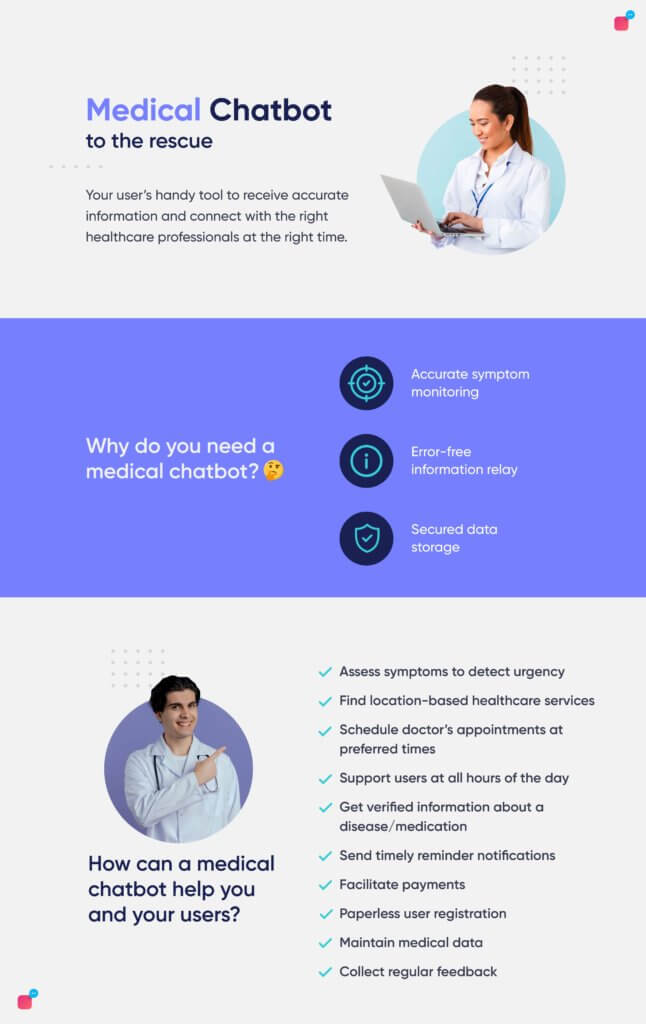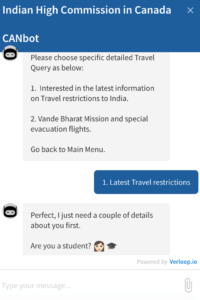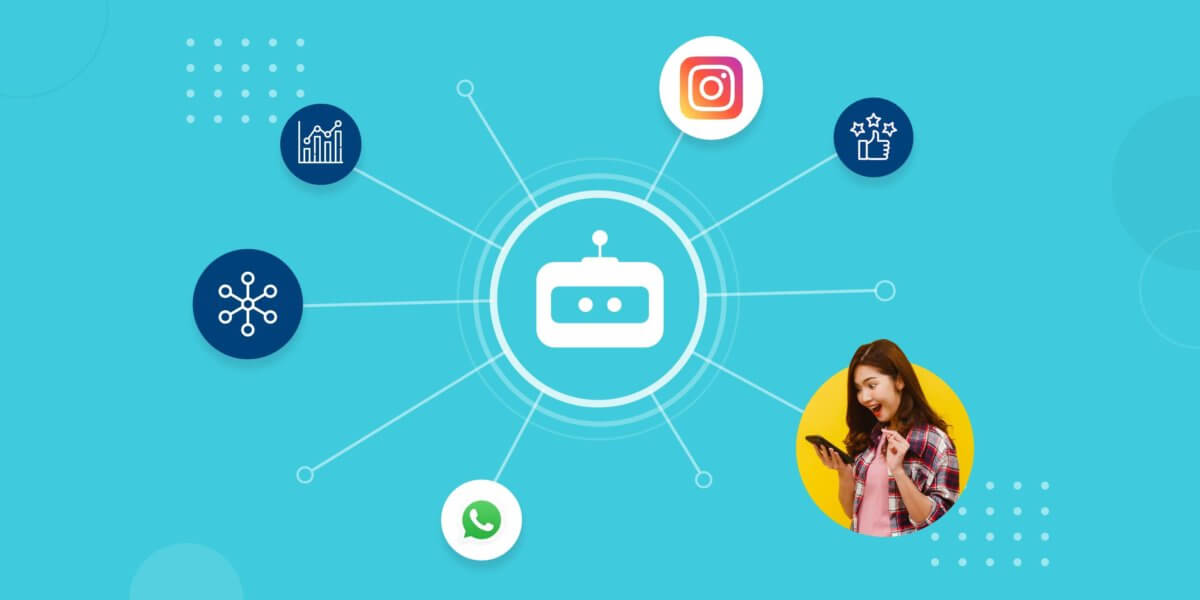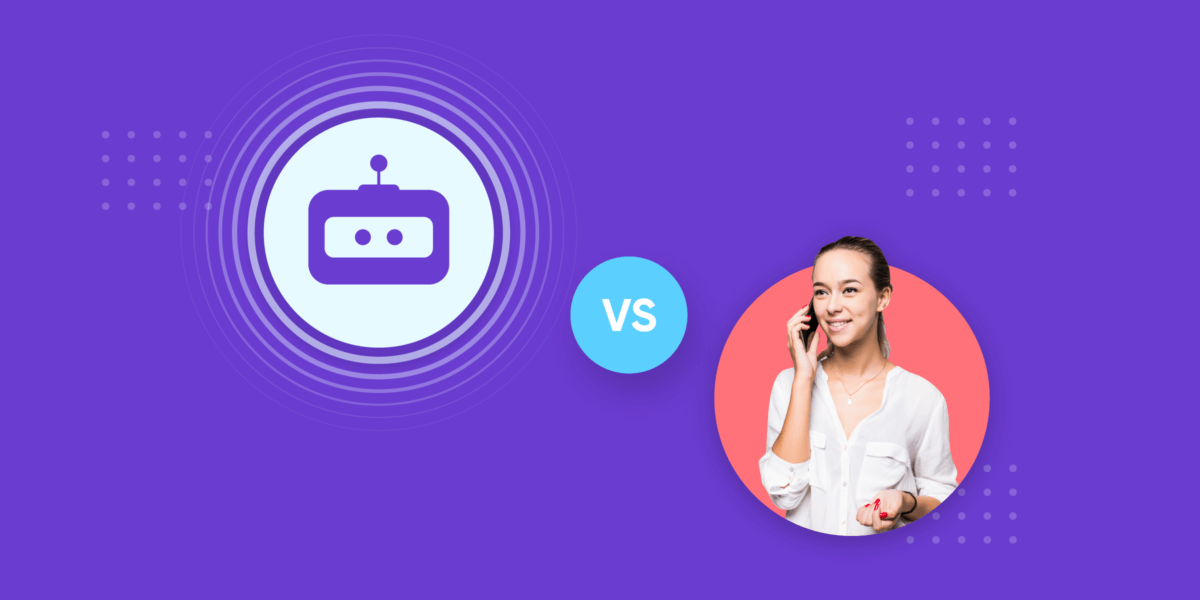Medical Chatbot: Let’s Chat-A-Bot it

Medical Chatbot: Let’s Chat-A-Bot it
We chat about the different uses of Chatbots. In this blog, we discuss the future of Healthcare and Pharma and Medical Chatbot.
What are medical chatbots?
A medical chatbot is an AI-powered conversational solution that helps patients and healthcare companies connect with each other and provide a seamless customer experience.
Various healthcare organizations have implemented medical chatbot to eliminate workload. As the employees will be busy taking care of patients, the Medical chatbot is here to rescue. Medical chatbot helps the patient to get all the information, fix an appointment and even receive feedback.
Like most grown adults, I hate hospitals. But it isn’t just the stale food, the fact that they remind me of my impending old age, or my fear of needles and drug-resistant killer viruses that put me off. It’s something simpler than that.
Hospitals are woefully inefficient.
Take the following as an example.
While the healthcare industry is rife with tales of terror, none are as menial, but as deadly as the necktie.
I’ve always maintained that ties are the most pointless pieces of attire in clothing, serving no functional purpose besides the purely cosmetic.
I believe ties to be nothing more than decorative camouflage for my business suit; designed to shield my middle-aged male physique, with my shrinking shoulders and protruding paunch, stopping me from feeling sufficiently self-conscious to hit the gym.
But if you’re a doctor, you might share my hatred for the accessory, as the harms of wearing a tie to a hospital are much more sinister.
Neckties are Medical Nooses
In a paper titled “ Doctor’s Neckties: A Reservoir for Bacteria.” written by the American Society for Microbiology, Steven Nurkin, one of the head researchers of the study, sampled neckties worn by physicians, physician assistants and medical students at a teaching hospital in New York. As a control group for the study, they also sampled neckties worn by security personnel at the same hospital.
In the study, they found that nearly half (47.6%) of the neckties worn by clinicians were found to harbour potential disease-causing bacteria.
The odds of a clinician wearing a necktie harbouring pathogens were 8-fold greater than that of the control group.
The United Kingdom has followed suit, with health officials banning ties, along with jewellery and long sleeves from their hospitals. Officials hope the ban will slow the spread of Methicillin-resistant Staphylococcus Aureus (MRSA), a superbug that accounts for more than 40 per cent of inpatient blood infections in the U.K.
I’m sorry, but can you imagine going to a state-of-the-art hospital, complete with a spectrum of diagnostic and therapeutic technology, Tesla Digital MRI scanners, voice-modulated integrated operating theatres and a 256-slice Brilliance iCT scanner, only to be killed by the piece of silk hanging off a slightly self-conscious doctors’ neck?
So whose fault is It?
If I’m being honest though, we really entirely can’t blame doctors or nurses or hospitals for this faux pas. Working in a hospital, on any level, is unbelievably difficult.
The hours are long and painful, the work is gut-wrenching, the student bills are nothing short of preposterous, and that’s before we arrive at doctors’ mental health and fatigue.
Doctors have to come to terms with death on a daily basis, so maybe it’s not surprising that nine of 10 doctors discourage others from joining the profession, and that over 300 physicians commit suicide every year.
Imagine finally “making it” but hating what you do, whilst a quarter Mil in student loans sits in your rear-view mirror.
A lot of this strain undoubtedly comes from the absolute focus and attention to detail that being a medical professional demands.
What’s the Cost of Fatigue?

Doctors, unlike most other professions, can’t take it easy on a given day. Every single patient is unique, no matter how boring the symptoms appear on the surface.
Each result has to be stringently monitored, examined, documented and codified, increasing the administrative drain on the medical staff, hindering them from spending time and energy on otherwise more important responsibilities.
There’s been nothing that can ease this burden on doctors because there’s simply been nothing that could match their expertise or intellect.
Suggested Reading: How Chatbots Are Making Mental Health Care Accessible During Pandemic
Until now.
We all know that Artificial Intelligence is the future, even in the pharmaceutical industry.
Over the past couple of years, AI has bagged all the big headlines in the pharma-tech world.
Google launched its Google Deepmind Health project, which is used to mine the data of medical records in order to provide better and faster health services.
Watson for Oncology has an advanced ability to analyse the meaning and context of structured and unstructured data in clinical notes and reports that may be critical to selecting a treatment pathway.
GlaxoSmithKline unveiled a new $43 million project to harness modern supercomputers and machine learning systems to predict how molecules will behave and how likely they are to make a useful drug, thereby saving time and money on unnecessary tests to speed drug discovery.
While the tools for self-diagnosis have been around for years, they’ve never really caught on, the running joke being that any symptoms you enter into WebMD diagnose you with cancer.
But medical Chatbots are interactive.
Most companies engage in passive interactions with their customers, via little more than unaided website surfing. And while there have been attempts to provide information through other outlets, this mostly exasperates the problem because of a lack of synergy between applications.
Web forms are not only hideously infuriating and limiting for customers, they’re also notoriously un-interactive. The average response rate on a form is 3%, while companies report that the response rate shoots up to 20% for companies that use a medical chatbot.
Beyond increased responsiveness, a Medical Chatbot makes great fiscal sense too.
Juniper Research forecasts that this technology could save pharmaceutical companies and hospitals $8 billion annually worldwide by 2022, up from $20 million this year.
The Medical Chatbot

A stream of companies has undertaken the challenge to bridge this gap, doing everything from helping customers book appointments with doctors or operating like pseudo nurses. Below are a few companies that directly deal with the medical chatbot industry –
- Florence — this chatbot nurse tells you to take your medicine, gives you instructions if you forgot to take a pill, monitors your health (and periods for women) and can help you find specialists and book appointments in your area.
- Your. MD — it replaces the assistant of a GP, asks about symptoms and puts enough questions approved by health professionals to identify a condition probabilistically then sets up appointments, referring you to physicians.
- Babylon Health — another conversational healthcare assistant with the feature of booking a doctor.
- SimSensei — still in its experimental phase, it uses voice and face recognition to mimic a therapist, also interacting with the patient at deeper levels.
- Ada — assess the patient’s health based on their symptoms and automates FAQs. From the first greeting to the final payment, this AI-powered medical chatbot personalises content in 100+ languages and can be used across every channel.
So, while this is great news for hospitals and patients alike, it’s even better for doctors.
Take, for example, the simple task of scheduling appointments. Patients can pre-emptively provide information to the bot, that their bedside nurses or doctors will use to reduce unnecessary readmissions and organise post-discharge follow-ups.
Alerts are an intrinsic function of a Medical chatbot too. Chatbots can signal hospital staff if patients need assistance and even inform care teams of urgent changes in a patient’s status or in an emergency situation.
Healthcare Chatbot Use Cases
Medical chatbots are revolutionising the healthcare industry. A report suggests that the healthcare chatbots market will be worth $703.2 million by 2025.
Clearly, medical chatbots are serving this industry well. Below we discuss some of the use cases of chatbots in the healthcare industry:
1. Check Symptoms
Chatbots can ask clarifying questions regarding symptoms before offering advice. Based on the answers, it can identify if the patient needs immediate care and book an appointment with a doctor. The chatbot can transfer the script to the medical healthcare provider so the patient doesn’t have to repeat themselves.
2. Find healthcare services
Patients can interact with medical chatbots to find the nearest hospital or clinic to them. With the help of location sharing services, chatbots can suggest healthcare facilities in their area and provide more information on the selected facility.
3. Schedule Doctor’s Appointment
With the help of medical chatbots, you no longer have to wait in line to meet your doctor. Making an appointment can be done in few simple clicks, avoiding phone calls and hospital visits. Chatbots can ease the process, and also send reminders about the appointment to the patients.
4. Raise Awareness
As we saw recently, a medical chatbot can be used to raise awareness about a healthcare issue and provide correct information on it. With the fast-spreading pandemic, there were many uncertainties and misinformation, which can be combated using a healthcare chatbot.

Suggested Reading: Learnings From A Coronavirus Bot That Engaged 290,000+ People
5. 24/7 Support to Patients
Chatbots never sleep and they can provide 24/7 support to patients. From answering frequently asked questions (FAQs) to connecting with a caregiver, chatbots solve the issue of quick customer support in this industry.
6. Medication Reminders to Patients
Medical providers can use chatbots to remind patients about medications as prescribed by their doctors. Chatbots are also great for reminders about re-prescription, follow-ups, routine checkups etc.
7. Billing and Registration
An AI-powered medical chatbot can be used for various billing and registration processes. From being admitted to a hospital to applying for an insurance claim, these chatbots make the process simple and personalised.
8. Paperless System
Healthcare chatbots can be integrated with EHR/EMR systems to maintain a patient’s medical data. Patients and nurses no longer have to carry huge document files with them when they are meeting their doctors.
9. Collect Feedback
Feedback is crucial for improvement. A healthcare chatbot can ask survey questions in an easy to answer format and share the details with the team.
Suggested Reading: The Making Of The Most Comprehensive COVID-19 Bot Flow: CANbot
What Does Medical Chatbot Mean for Us?
Medical Chatbot can also play a ground-breaking role in synergizing front office healthcare; they can streamline admissions, discharge, and transfer requests, schedule patient consultation requests and send and receive referrals.
Chatbots are programmed to facilitate collaboration between peers and update record systems with patient’s medical history, send alerts and notifications for prescription refills.
No longer will a patient turn up at a consultation only to find their notes have not been provided, chatbots will automatically send relevant training material, patient history, and pertinent data to the necessary parties ensuring the smooth running of the entire process.
And while it may seem nearly impossible to integrate information sources, chatbots can create a single system of records by transferring data from legacy systems to new databases, saving the systems time and money.
Chatbots can save thousands of working hours a year for hospitals and doctors, leading to both cost savings and a better quality of service for the user.
Want a better chance to survive your next visit to the hospital? Tell your doctor to stop wearing ties and tell your hospital to start using a medical chatbot.







